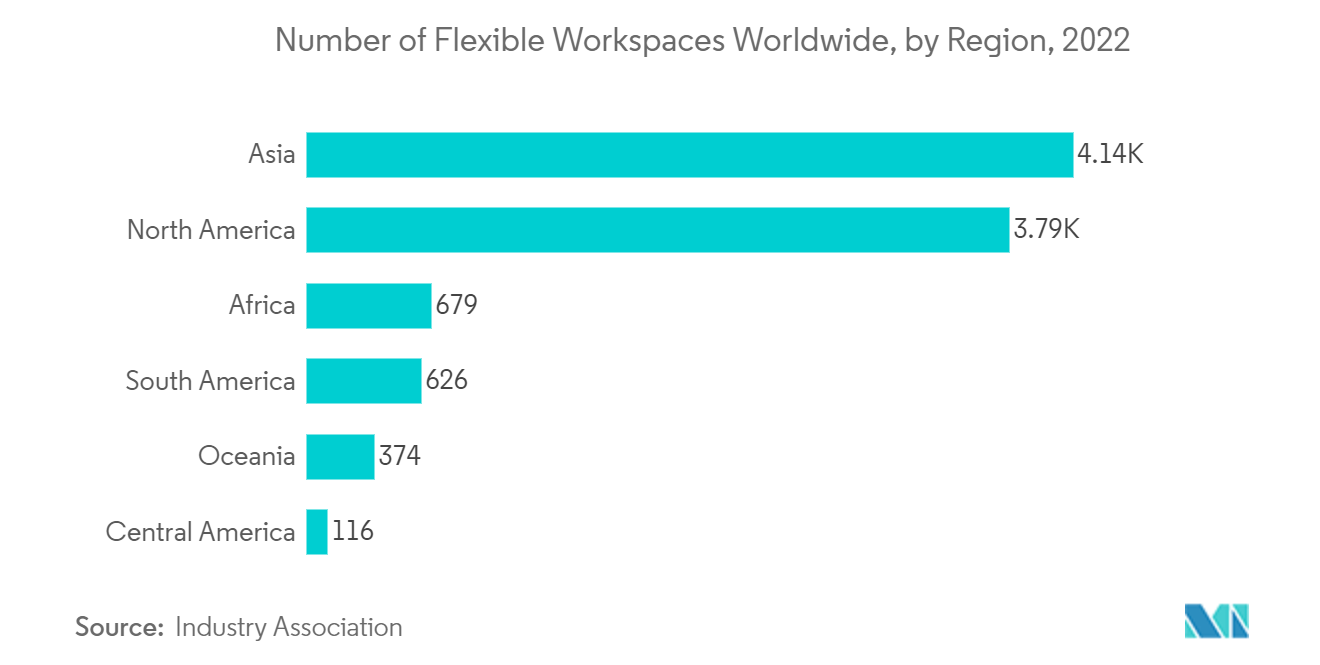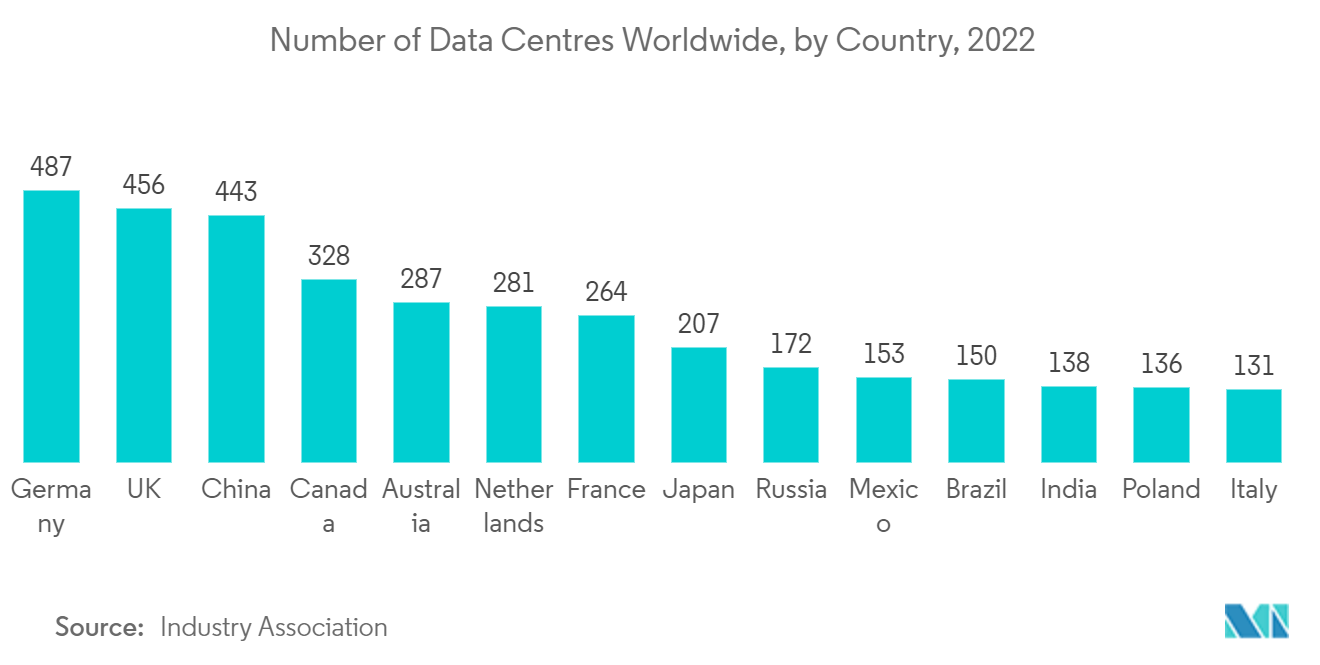Market Trends of Office Real Estate Industry
Rise in Demand for Coworking Spaces
- Companies are resuming operations and adapting to the new normal as they recover from the COVID-19 impact, which had previously resulted in restrictive containment measures such as social distancing, remote working, and the closure of commercial activities. COVID-19 accelerated the growth of flexible workspaces significantly. At the year 2019 end, just before the pandemic, the flexible office spaces market was spread over some 30 million sq. ft, with 471,782 seats across the top seven markets in India, per JLL research data. This number plummeted to some 20 million sq. ft and 312,990 seats in end-2020. The recovery since then has been impressive.
- By June 2022, co-working spaces in the top seven cities had grown 117 percent to nearly 43.4 million sq. ft, with over 679,760 seats. By the end-2022, the numbers have grown to 50 million sq. ft and 750,000 seats. India is on the verge of a co-working revolution, with several major players competing for dominance across the country. The Executive Centre's occupancy and foot traffic increased from 75% in 2020 to 90% in October 2021 in major cities in India.
- It is estimated that the number of coworking spaces in the United States will double or triple in the next five years. By 2030, JLL predicts that 30% of all office space will be consumed flexibly. According to the Global Coworking Growth Study, approximately 5 million people will be working from coworking spaces by 2024, up 158% from 2020. As of March 2022, Europe concentrated on approximately 4,200 flexible workspaces. In addition to that, Asia had over 4,100 spaces dedicated to flexible work. In 2020, around 1.93 million people were working in coworking spaces worldwide.
- Moreover, sustainable practices adopted by coworking space providers offer substantial benefits and are economically feasible. For instance, CoCoon in Hong Kong has a floor made of natural bamboo and uses non-toxic paints and LED lights. In addition to this, drought-resistant plants are part of the interior and exterior. Another such example is Green Spaces in Denver uses about 160 solar panels on the roofs of its offices. These allow significant cost savings at Green Spaces. Thus, sustainable coworking space is also growing over the forecast period.

Increasing Demand for Data Centres Driving the Market
- Demand for data center capacity is at an all-time high, with end-user spending on global data center infrastructure approximately hitting USD 200 billion in 2021, up by 6% from 2020. Furthermore, Microsoft's announcement of a plan to build up to 100 new data centers per year suggests that this trend will continue, and other companies may soon follow. For instance, in May 2022, HULIC (a real estate company) started a construction project that will involve the demolition of an outdated office building to make way for a new data center in Nihonbashi, and its completion is expected in 2025.
- Increased demand for data centers was fueled by lifestyle changes prompted by the pandemic throughout 2021, and this growth is expected to continue through at least 2024. As remote work becomes more common and more activities move to the digital realm, internet usage has risen and will continue to rise, implying that data creation will increase as more users seek cloud-based services. As of January 2022, 2,701 data centers were in the United States, with a further 487 data centers located in Germany. The United Kingdom ranked third among countries in terms of the number of data centers, with 456, while China recorded 443.
- In addition, the purchase of internet-of-things (IoT) devices increased. IoT devices will generate 73.1 zettabytes by 2025. About 1,000 data centers will be required to store one zettabyte at the current capacity. Predicted data storage needs are high, and data center operators must make sure they are maximizing every square inch of their facilities to meet current data needs and handle future ones.
- The data center industry will need to be equipped to store increasingly large amounts of data due to increased demand. Building more data centers may appear to be a solution. However, lockdowns in 2020 caused the postponement of more than 60% of new data center construction.
- Though server CPUs are still plentiful, recent supply chain shortages worsened the data center construction situation as the industry struggled with absurdly high construction material prices. As a result, data center construction will likely take years to catch up to pre-pandemic levels, which will still make it difficult to match current demand.

